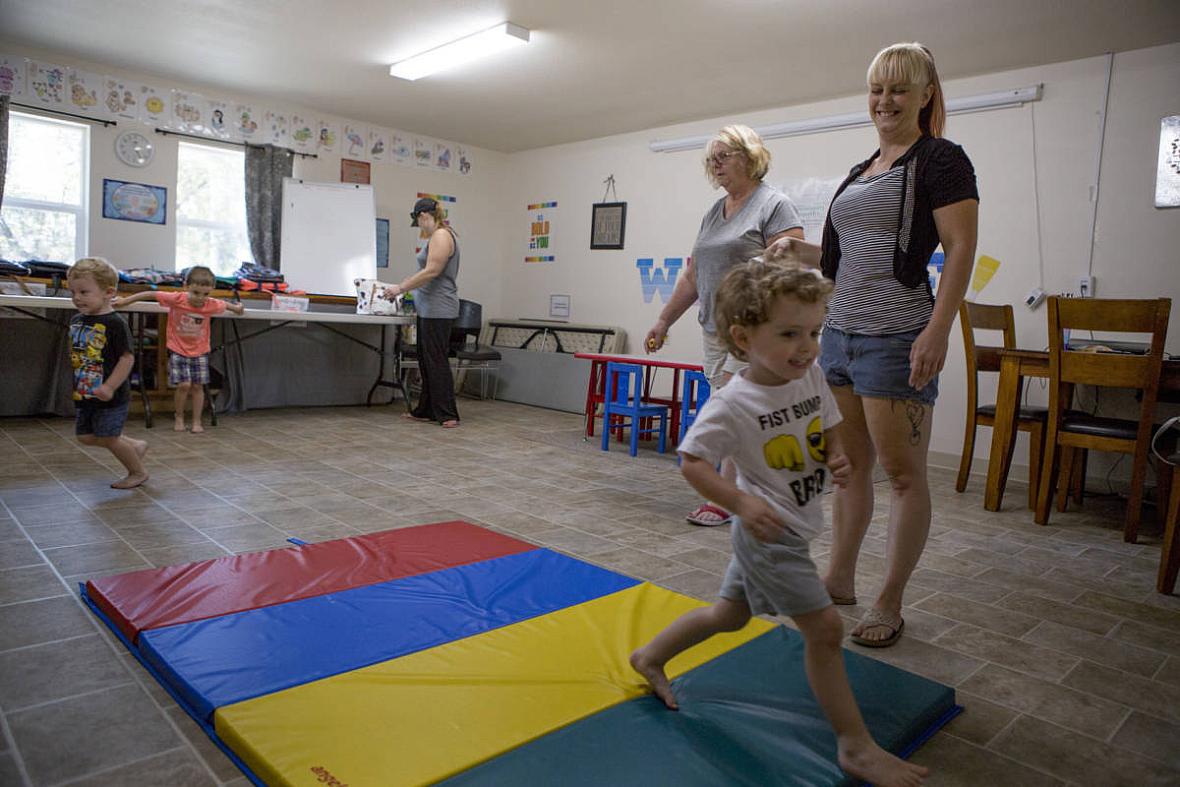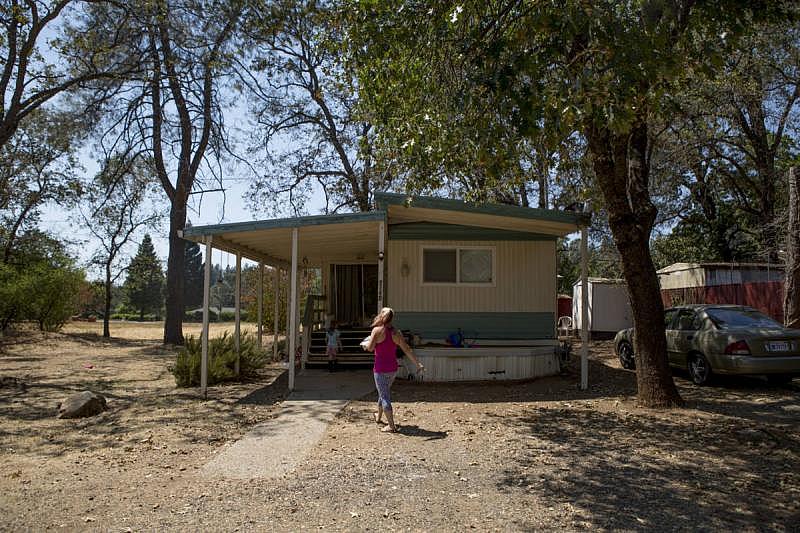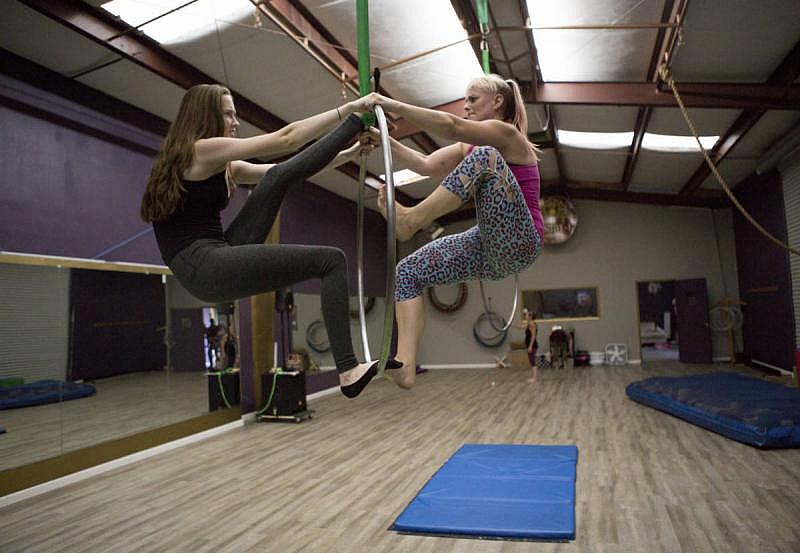Childhood Trauma Can Mean Early Death. This California Mom Wants to Beat the Odds
This story was produced as a project for the USC Center for Health Journalism’s California Fellowship.
Other stories in this series include:
How a story about childhood trauma in Paradise became one of community trauma
Paradise remembered by those who called it home
PHOTOS: Paradise, Before and After the Camp Fire
Trauma Before and After the Camp Fire
Overcoming a Lifetime of Trauma, Then Facing a New One: Wildfire

Sabrina Hanes is just 33, but has the medical record of someone twice her age. She recently learned these issues may be linked to the trauma she went through as a kid. To prevent further health issues, she's built a routine focused on education, exercise and building community.
(Photo: Anne Wernikoff/KQED)
Emotional neglect, physical abuse, divorce, a household riven by addiction — science shows that traumas like these in childhood cause poorer health later in life, both mentally and physically.
The first research was conducted in the late 1990s and recently popularized by San Francisco pediatrician and author Nadine Burke Harris. Doctors behind the first study dubbed these childhood traumas “adverse childhood experiences,” or ACEs, and devised a measurement scale: For each negative experience a person had, his or her “ACE score” would go up by 1 point.
The full range of the ACEs scale goes from zero (no ACEs) to 10 (a person who has experienced all 10 categories of adversity). You can find out your own ACE score by completing the ACEs questionnaire.
A person with four or more ACEs has more than five times the risk of depression, four times the risk for chronic lung disease and double the risk for cancer. An ACE score of six or more shortens life expectancy by 20 years on average.
So what does someone do if they learn they have a high ACE score? Doctors say there are several ways to intervene, and while it’s more effective to intervene when people are young, adults can still work to heal the wounds of their past.
There are specific therapies that can help, such as Child Parent Psychotherapyand Parent-Child Interaction Therapy.
They're aimed at parents who have high ACE scores and want to make sure their children have a fulfilling childhood. There are online communities for practitioners and people looking for resources. Doctors also recommend other stress-relieving activities: better sleep, regular exercise, meditation, good nutrition and a focus on building healthy relationships.
Sabrina Hanes lives with her 4-year-old daughter, Aroara, in Paradise, California, a small Butte County town set among pine and oak trees. Sabrina is 33 now, but her youth was rife with pain, and her ACE score is 8 out of 10.
She got involved in drugs in her early adulthood and was in and out of jail, but 10 years ago she committed to changing her life. She’s been sober since she was 23.
These days, she looks at life as “something amazing and beautiful.” Health reporter Laura Klivans and photographer Anne Wernikoff both spent time following Sabrina and her daughter, Aroara, through their day, to see how Sabrina maintains a hopeful and resilient attitude despite the legacy of her painful past.
Sabrina and Aroara in their two-bedroom home in Paradise, California. (Photo: Anne Wernikoff/KQED)
Sabrina plays with her 4-year-old daughter, Aroara, in their home. Sabrina is working toward a bachelor’s degree in child development at Chico State. She carefully chooses toys and games she feels will challenge her daughter.
Sabrina’s refrigerator is decorated with photos of Aroara at various ages.
Emotionally neglected as a child, Sabrina reminds Aroara regularly how much she cares for and loves her. Her daughter’s name means “dawn,” but is spelled atypically to include “roar,” which Sabrina says is very fitting for her outgoing daughter.
Sabrina had always wanted to be a mom, but she was scared to repeat the behavior of her own parents. Her experience with her daughter, Aroara, however, has allayed those fears. (Photo: Anne Wernikoff/KQED)
Sabrina and Aroara buckle up before driving to the nonprofit Youth for Change, where Sabrina works as a volunteer teacher.
Sabrina first connected with the nonprofit when she was pregnant with Aroara. She was reluctant at first, but now says the staff members are “like family.” The consistent relationships she has developed with them have helped turn her life around.
At Youth for Change, Sabrina leads the same class she used to take.
Toddlers and their caregivers gather each Monday for activities that build social and emotional skills. Sabrina has added school-readiness activities to the curriculum that is otherwise focused on social and emotional growth.
After class and a walk to a nearby pond, Sabrina and Aroara head home.
Sabrina and Aroara outside their home. (Photo: Anne Wernikoff/KQED)
They moved into this house just before Aroara's first birthday. Although the home needs some repairs, Sabrina loves having a consistent refuge so close to nature. In her own childhood, Sabrina moved several times, bouncing between her mother and father, who’d gone through an acrimonious divorce.
Sabrina eats a lunch of leftover rice, quinoa and tortilla chips while she and Aroara take a break at midday to watch "The Emoji Movie," Aroara's current favorite. Because of her multiple health issues, Sabrina has many dietary restrictions, and she has trouble affording food she can eat on a fixed income.
“I usually go without, to make sure Aroara is taken care of,” she said.
Regular exercise helps Sabrina maintain a calm mind despite the mental health problem she had in the past. She was diagnosed with bipolar disorder as a teenager and once took medications. Now, however, she manages her mood through diet and exercise.
Sabrina and Aroara hit their favorite playground after lunch. Sabrina spends all her time with her daughter, except when she’s taking classes at Chico State.
When she was that age, Sabrina often had to fend for herself, which left her vulnerable to abuse. She is committed to giving Aroara a different experience.
Sabrina and Aroara spend the afternoon and early evening at Positive-I, a dance and circus arts studio. Sabrina practices on the aerial hoop with her dance partner, Storrie Morrow.
“I've made a lot of really strong connections with women that are very empowering and uplifting,” Sabrina said. Aroara attends classes for kids, and afterward plays near her mom and other dancers.
Since she began studying aerial hoop last year, Sabrina has become a dedicated practitioner, and she works out at the studio several times a week.
She had her first solo performance a few months ago, and chose a song called “Conqueror” to accompany her routine. She felt the lyrics resonated with her own life experiences: “I’d rather stand tall than live on my knees.”
Sabrina practices fire dancing with Marlo Moor, left, and Tiffany Ridenour, center, outside of Positive-I.
They keep in step with ease, and joke: "Can you tell we dance together?" Sabrina never imagined she’d do anything like fire dancing, and loves how this community of mostly women pushes her to try new things.
While Sabrina was already on a path to change her life for the better, getting pregnant with Aroara in 2013 pushed her to achieve her goals faster.
“I wanted to just be there for her and show her what I didn’t get as a child,” she said.
This story was produced as a project for the USC Center for Health Journalism’s California Fellowship.
[This story was originally published by KQED Science.]

